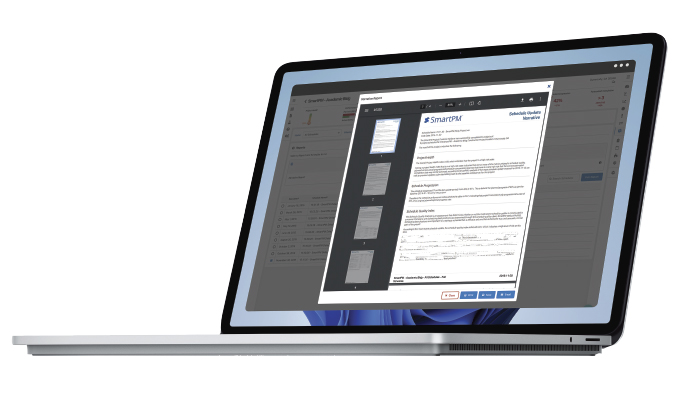When Ranjeet Gadhoke, vice president of project controls at Zachry Construction Corporation, went looking for a schedule-data analysis tool, he experimented with numerous options, each of which had one or more shortcomings.
One of the programs, recalled Gadhoke, was so laser-focused on the score and the quality of the schedule that it didn’t truly provide the big-picture perspective that he was seeking—too much of a “micro view.” Another tool that he used for some time was not “graphical” enough. It told him everything he needed to know, but it generated so many pages of data, finding the right information was like finding a needle in … well, you know where. Yet another offering presented information in a more graphical format, but, according to Gadhoke, it was just making the data fancier. It did not offer the comprehensive insights that he and his team demanded. He describes this program with the most wonderful colloquialism: “It was like putting lipstick on a pig.”
THE CHALLENGE
Despite the challenges of finding the optimal solution, Gadhoke could not abandon his search, as the search had been catalyzed by myriad issues within the company’s scheduling process that were not going to go away on their own. “The scheduling software we were using didn’t allow for easy communication to the team,” he recalls. “We would have to print our bar and Gannt charts, lay them out on the table, explain to people what the scope of the activity was, the remaining durations, finish-to-start scenarios, you name it. It became quite a challenge to communicate the schedule. Some people in the meeting would keep the reports, others threw them out. Our biggest challenge, then, was how do we quickly and clearly communicate our schedule to all the stakeholders?”
But that was just the tip of the proverbial iceberg.
“To make matters worse, we would have to export info from our scheduling program and build our S-curves, calculate schedule compression, and compute float consumption. By the time our scheduling program finished figuring out those KPIs, it was time to do another monthly update. So, it was difficult to get information and by the time we got it, it was almost irrelevant.”
And of course, there was the schedule itself.

SCHEDULE ANALYSIS
“I needed a tool that could analyze the schedule for delays, overruns, and other potential obstacles,” Gadhoke says. “All of the other capabilities we were looking for were certainly critical, but if we could get a platform that could also help us better manage the entire schedule on a project, we would not hesitate to pull out our checkbook.”
Gadhoke’s exhaustive search led him to SmartPM, the premier schedule-data analysis tool. For Zachry, SmartPM checked all the relevant boxes, and the checkbook appeared. “SmartPM did everything we needed it to do, and more,” says Gadhoke. “It allows us to identify potential roadblocks in our schedule—and do it early enough to remediate the issues. It presents information in a graphical format that allows us to communicate a project’s status quickly and easily. And it can be used to create a high-level overview for the C-suite executives or a deep dive for the site team. It all goes back to how the product analyzes data. No one else examines the data quite the way they do.”
REVIEWING THE DATA
The use of SmartPM is assigned to the “data creators”: the area schedulers and area-controls people. The area-controls people produce their monthly update and load it into SmartPM (a manual process which will soon be automated). Once it’s populated, the area schedulers review the data; if anything raises a red flag, they’ll communicate it to the project managers. “We have a monthly meeting with 70-80 people, in which we review one region at a time,” Gadhoke explains. “Before we start the meeting, I show the information generated by SmartPM. This means everybody sees it at one time. We’ve got all kinds of dashboards that present the information in a graphical, easy-to-comprehend format. When the meetings are adjourned, there is a crystal-clear understanding of all the projects in that region.”
Gadhoke notes that SmartPM provides top-level executives involved in a project with one of the most valuable assets: predictability. “By and large, CEOs are good at managing risk. But if they’re using garbage data, it’s hard for them to forecast where they’re going. And when predictability disappears, CEOs lose interest in whatever we’re telling them. SmartPM helps us provide CEOs with the data they require to figure out where the job is going from both a time and money perspective, which makes risk management much easier.
“It’s not just predictability,” says Gadhoke. It’s visibility of a company’s entire construction portfolio, which comes in handy, given that Gadhoke manages multiple projects and the portfolio manager he was using was not nearly as robust as he needed. “You see something that’s falling behind, or you notice a project was compressed 10% one month, then 25% the next month, but the end date hasn’t moved. You can begin to ask questions about whether there are other areas where people could be performing parallel work. You get to see a simple dashboard; as you study it over time, you can train your mind to see the difference in the deltas. Because of this visibility, communication with management is greatly facilitated.”
ACCENTUATE THE POSITIVE
While tangible, measurable results are difficult to ascertain, Gadhoke notes that because SmartPM provides visibility into the direction of a project based on trends, he can use that information to prevent negative trends from getting worse and improving positive trends. Plus, SmartPM is an effective tool for determining where a delay occurred and who was responsible. Gadhoke offered an example to illustrate this point. “One of the projects we worked on experienced some delays,” he said. “Previously, it might have been hard to pinpoint where they happened. In meeting with the project owner, I was able to bring in SmartPM and show exactly how the delay occurred. The owner had no trouble following the data, and it ultimately helped us negotiate the claim much more in our favor. The owner told us that contractors usually come in and say everything is his fault. SmartPM analyzed exactly what fell on him and what was on us.”
Some companies using SmartPM claim that it helps them produce better schedules to begin with; when the program is consistently pointing out the same problem areas, schedulers become more diligent in eliminating these roadblocks right at the starting line.
A SCHEDULING PIONEER
For a company that can bill itself as a pioneer in scheduling, Zachry already has the scheduling process well under control. Consider: H.B. Zachry Company was one of the early adopters of the critical path method (CPM) of scheduling, experimenting on construction projects back in 1959. What’s more, Zachry and IBM jointly created a new approach to scheduling known as the “precedence diagramming” method; in March 1963, the two firms entered into a joint venture agreement to develop and implement this system for project scheduling.
But even with this kind of scheduling pedigree, there’s always room for improvement. “Some of the entries that SmartPM uses to grade schedules were already part of our process,” observes Gadhoke. “No open ends, not too many lags, including the right amount of float—these are the kind of basic criteria we had already incorporated into our scheduling guidelines. But that doesn’t mean we don’t make the occasional scheduling error. In fact, because we make fewer scheduling mistakes than most companies, our errors are harder to spot. In that respect, SmartPM keeps us on our toes and helps us stay on track.”
Gadhoke expects to expand the use of SmartPM to not only include more of the program’s capabilities but to even apply it to the bid process. “They recently introduced a Narrative Report feature, which provides an easy-to-understand, written description of a project’s status. We will be putting that to use in the very near future. SmartPM can also be a big differentiator for us at bid time,” he adds. “I can see SPM analyzing our proposal schedule, figuring out if we can take advantage of rephasing, then gaining an advantage on price.”
Zachry has been so impressed with the SmartPM platform, they decided to invest in it. All the company’s intellectual property, such as patents, are housed in a company known as Zachry IP, or Zipco. Over time, Zipco grew into a vehicle for investing in advanced construction technology. And in February of this year, SmartPM became one of their investment targets. “We just liked what they had to offer in terms of their current technology, as well as their roadmap for the future,” Gadhoke explains.
CLOSING THOUGHT
There’s no question Zachry made a sound investment in its purchase of SmartPM by ensuring smoother communication to both teams and executives; identifying potential problems areas well in advance; producing better reports; and even being able to place the responsibility for issues where they rightfully belong—even if it’s their own company.
It’s highly likely their financial investment will be just as sound.
For More Information:
For more about SmartPM, visit smartpmtech.com.
Modern Contractor Solutions, September 2023
Did you enjoy this article?
Subscribe to the FREE Digital Edition of Modern Contractor Solutions magazine.



